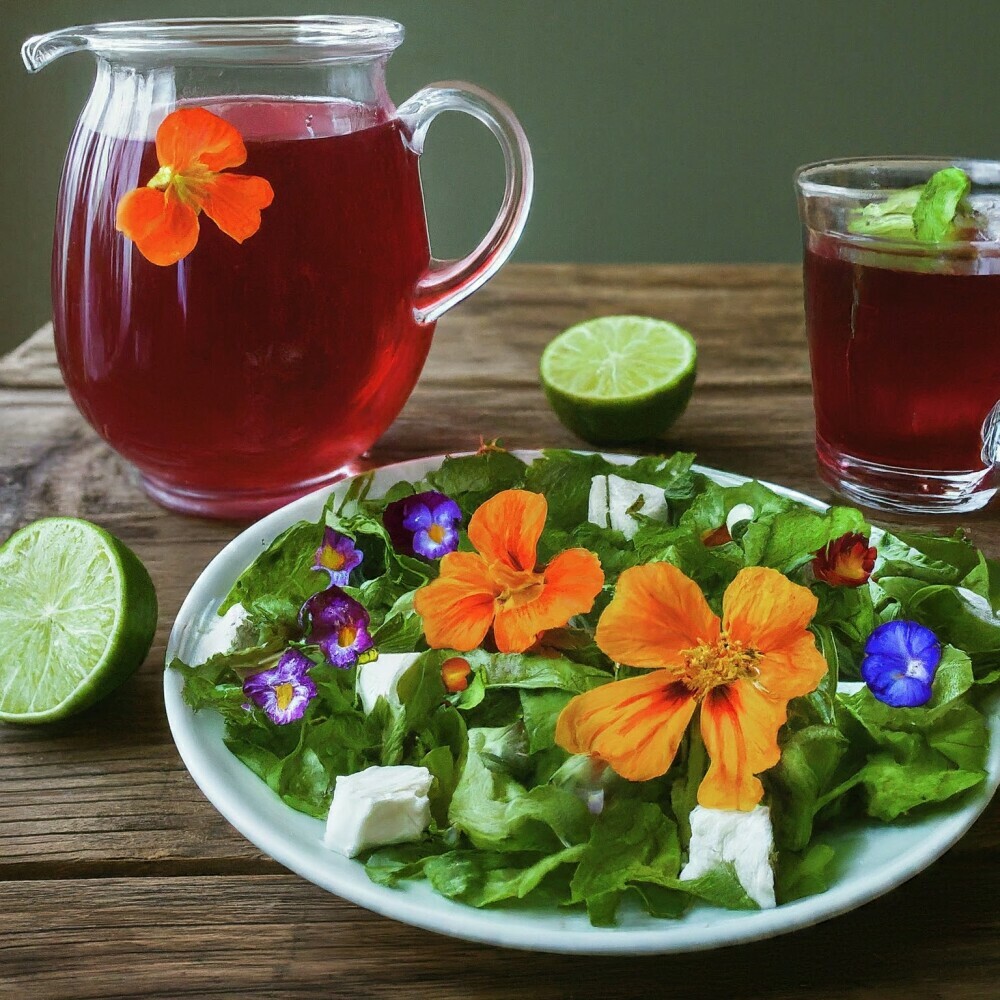 I will introduce you to a fascinating component of gourmet cooking that often flies under the radar: rare edible flowers. While you may have seen a rose petal on a dessert or a sprinkle of lavender in a salad, there’s another dimension to explore. This isn’t just about adding a pop of color; it’s also about bringing unique flavors and textures to your plate.
I will introduce you to a fascinating component of gourmet cooking that often flies under the radar: rare edible flowers. While you may have seen a rose petal on a dessert or a sprinkle of lavender in a salad, there’s another dimension to explore. This isn’t just about adding a pop of color; it’s also about bringing unique flavors and textures to your plate.
You’ll learn about the benefits of using these natural beauties in your cooking, from elevating the aesthetics to enhancing the taste of your dishes. This approach harmonizes with the call for biodiversity and sustainability. Incorporating edible flowers into your meals could offer some nutritional perks—though it’s always wise to check for potential allergies and ensure safe sourcing.
What’s particularly thrilling is the opportunity for creativity. You open up a spectrum of culinary possibilities by understanding how to properly utilize flowers like Dianthus, with its spicy-sweet nuances, or Borage, with a refreshing cucumber-like twist. So, let’s sharpen our senses and begin this delicious exploration.
Discovering the Unusual Palate: A Guide to Rare Edible Flowers
You might be familiar with using herbs and spices to liven up your dishes, but have you considered the role flowers can play in your culinary creations? Flowers in cooking is an age-old practice resurfacing in modern cuisine, bringing an array of unique tastes, textures, and colors. In this guide, we will explore some rare edible flowers that can transform your dishes into works of art.
Take Dianthus, for instance. These flowers, with their lovely pink, white, or striped petals, are not just eye candy. When the petals are snipped away from the base, they disclose a spicy-sweet, clove-like taste that’s excellent for infusing sugars or garnishing drinks and desserts.
Then there’s Borage, boasting brilliant blue blossoms that recall an excellent, cucumber-like flavor. This makes them a refreshing addition to salads, cold soups, or even frozen into ice cubes for an unexpected twist in your summertime beverages.
Nasturtiums bring a peppery zing similar to arugula or watercress, making them perfect for tossing into salads for a splash of color and spice. Their vibrant red, orange, and yellow blossoms make whimsical garnishes for appetizers and entrees.
Squash Blossoms may be more familiar with their delicate, slightly sweet flavor. They are perfect for stuffing with ricotta or goat cheese and then frying to a golden crisp, offering a crunchy and tender texture.
And let’s not forget about the Daylily, with its crunchy texture and mild, floral-sweet taste. It is exquisite in Asian-inspired stir-fries or stuffed with a savory filling, bridging the gap between ornamental and functional in your vegetable patch.
But it’s not only about taste. These flowers paint a palette across your plates, enticing the eyes as much as the palate, and promise to pique your guests’ curiosity. Let’s move on to incorporating these beauties into our culinary repertoire, lending sophistication and a touch of whimsy to our dishes.
Culinary Innovations: Pairing and Cooking with Unique Blossoms
I will show you how to transform your meals with floral elegance. Cooking with rare edible flowers isn’t just about tossing petals into a salad; it’s about thoughtful combinations that enhance flavor profiles while offering visual appeal.
Infuse syrups and liquors to capture delicate flower essences. Imagine a cocktail with a hint of lavender or a dessert drizzled with rose-infused syrup. The process is simple, but the impact on your taste buds is profound.
Edible blooms give desserts an artistic and flavorful edge. Imagine a lavender panna cotta or a chocolate tart topped with crystallized violet petals. Edible flowers in desserts are a treat for the eyes and elevate the dish with subtle, aromatic flavors.
Pair blossoms with proteins and veggies in savory dishes to create harmony on the plate. A pansy might complement the mildness of chicken, while the peppery nasturtium kicks grilled fish.
But remember, flowers can be more than just a garnish; they’re also natural food colorings and flavor enhancers. Adding calendula petals to butter or cheese spreads is one way to bring their bright color and delicate flavor into your cooking.
Ensuring Safety and Quality: Best Practices for Using Edible Flowers
Now that we’ve discovered the vast array of flavors and uses rare edible flowers bring to the table, it’s critical to address safety and quality. I’ll walk you through the necessary steps to ensure your botanical additions are delightful and safe.
First, it’s important to only source your flowers from reputable growers or sellers. This ensures the flowers haven’t been treated with pesticides or chemicals that aren’t food-grade. Don’t worry too much about finding these—many local farmers’ markets and specialty stores often carry edible flowers grown specifically for culinary use.
Next, let’s talk about hygiene and preparation. You’ll want to gently clean the flowers, as you would with any produce, to remove potential dirt or bugs. Use cold water and consider a salad spinner to dry them without causing damage. And here’s a key point: permanently remove the stamens, pistils, and sepals, as these parts can be bitter or contain unwanted pollen.
It’s not just about avoiding the wrong parts of the flower; there are potential allergens to consider. If you’re serving dishes with edible flowers to guests, check for any allergies first. The last thing anyone wants is an unexpected reaction spoiling the meal.
Finally, if you’re as excited about using edible flowers as I am, it’s worth considering conservation and responsible harvesting. Growing your edible flowers can be a rewarding experience, but always remember to harvest sustainably. Leave enough flowers for the plant to grow, and never over-harvest from the wild, as this can disrupt local ecosystems.
That wraps our journey through rare edible flowers and their culinary uses. Choose something that resonates with you and your cooking style while being mindful of these best practices. I hope you’ll find joy and inspiration in adding a touch of nature’s beauty to your dishes. Bon appétit!
